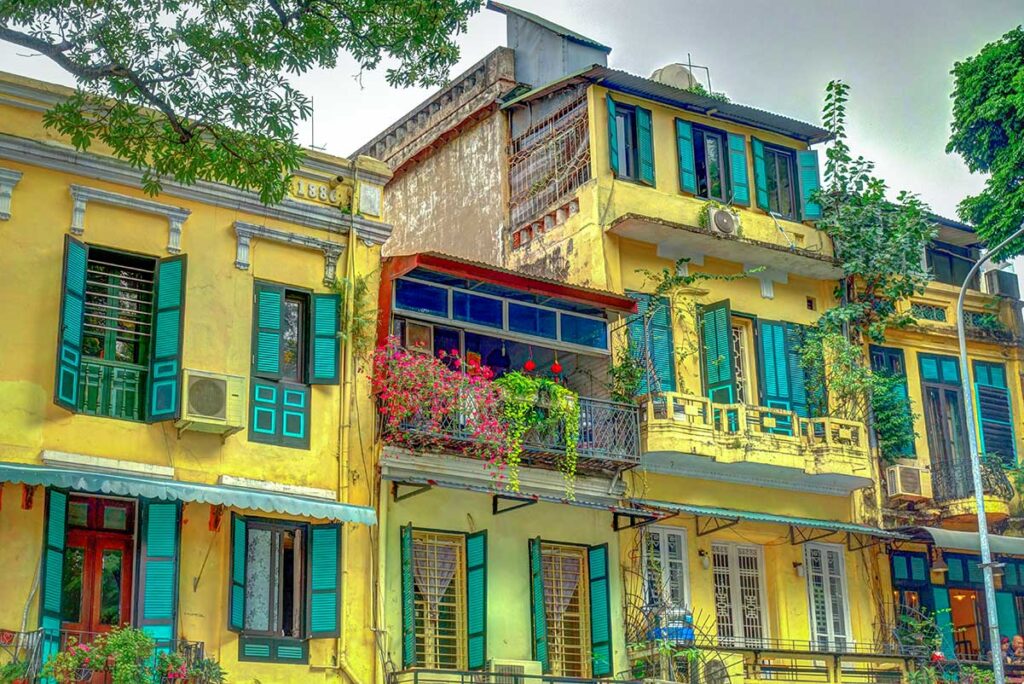What is the French Quarter in Hanoi?
French Colonial Background
The French Quarter in Hanoi was shaped during the late 19th and early 20th centuries, when French colonial forces occupied northern Vietnam. After seizing control of Hanoi in 1882, the French set out to redesign parts of the city in the image of a European colonial capital.
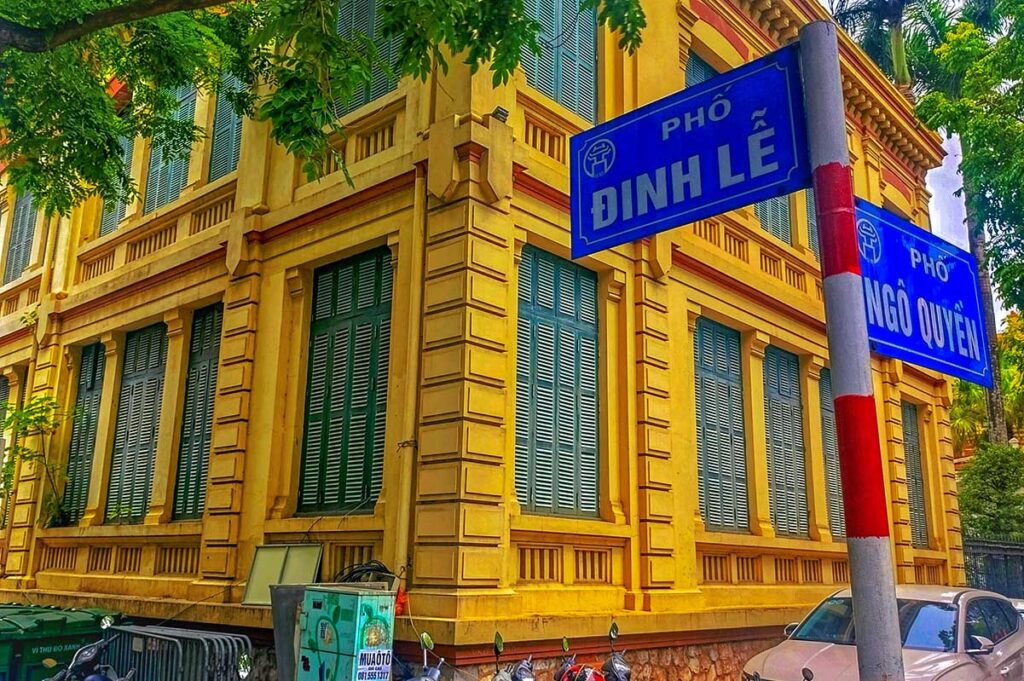
They cleared traditional Vietnamese homes and built wide boulevards, yellow-painted villas, administrative offices, and military compounds. This part of Hanoi became the administrative and cultural center of colonial Indochina, housing government institutions, embassies, and French-style hotels. After independence, many of these buildings were repurposed, but the overall character of the neighborhood has been preserved, blending French design with Vietnamese life.
Layout & Atmosphere
Today, the French Quarter remains one of the most elegant areas in Hanoi. The streets are broad and shaded by large trees, with pastel yellow villas, wrought-iron balconies, and neoclassical façades that give the area a calm, European feel.
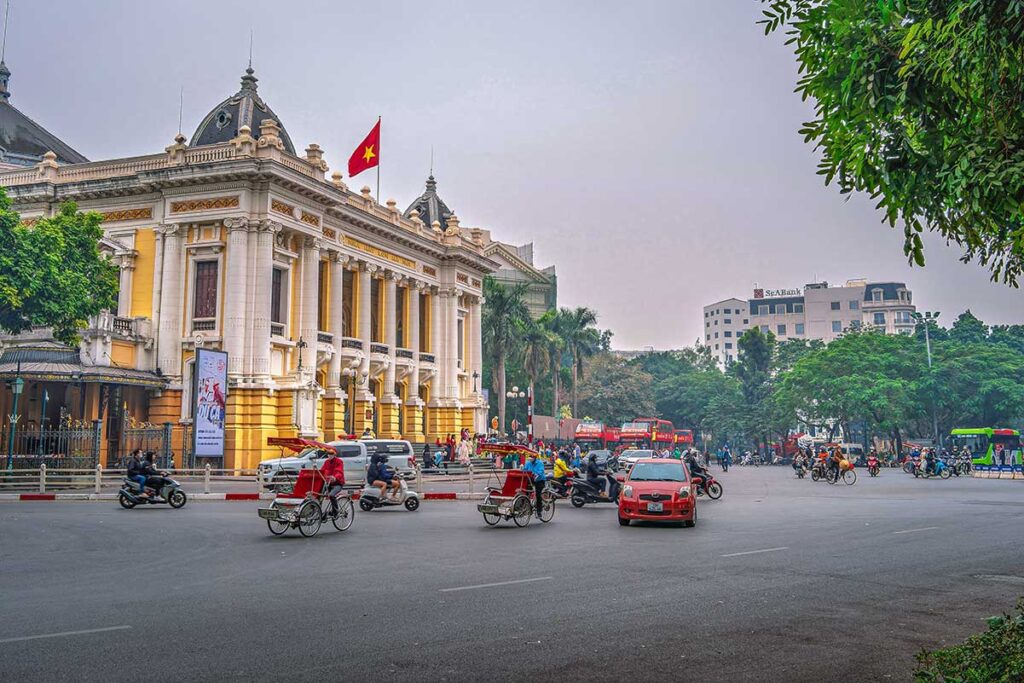
You’ll find embassies, museums, grand hotels, and cozy coffee shops tucked between cultural landmarks.
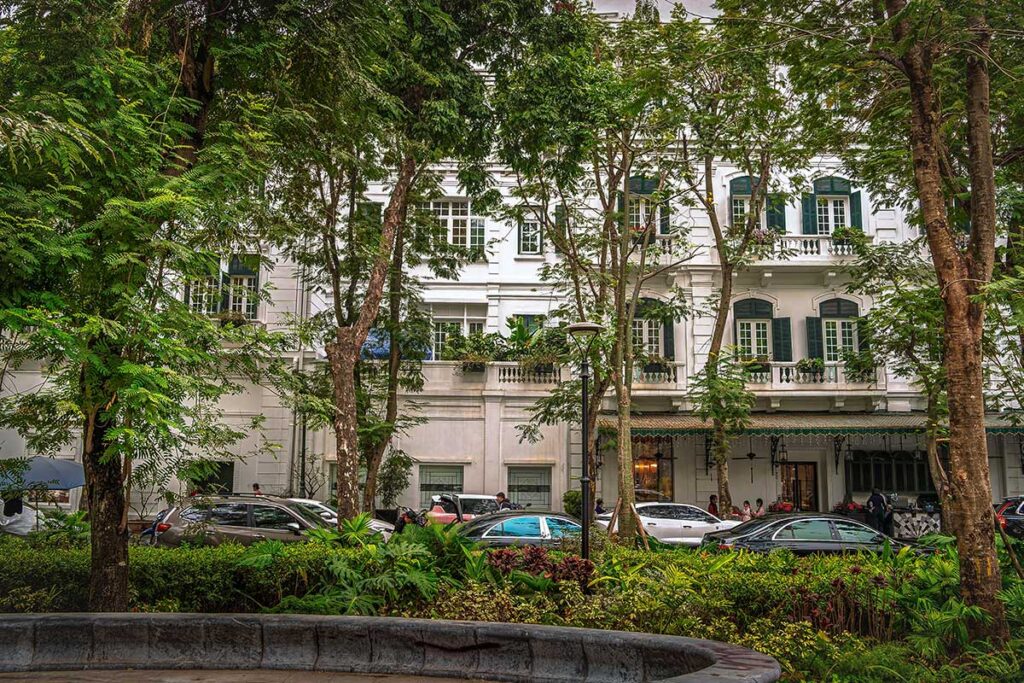
The atmosphere is noticeably quieter than other districts, and the urban layout—with green spaces, traffic circles, and orderly sidewalks—feels closer to Paris than the rest of Hanoi.
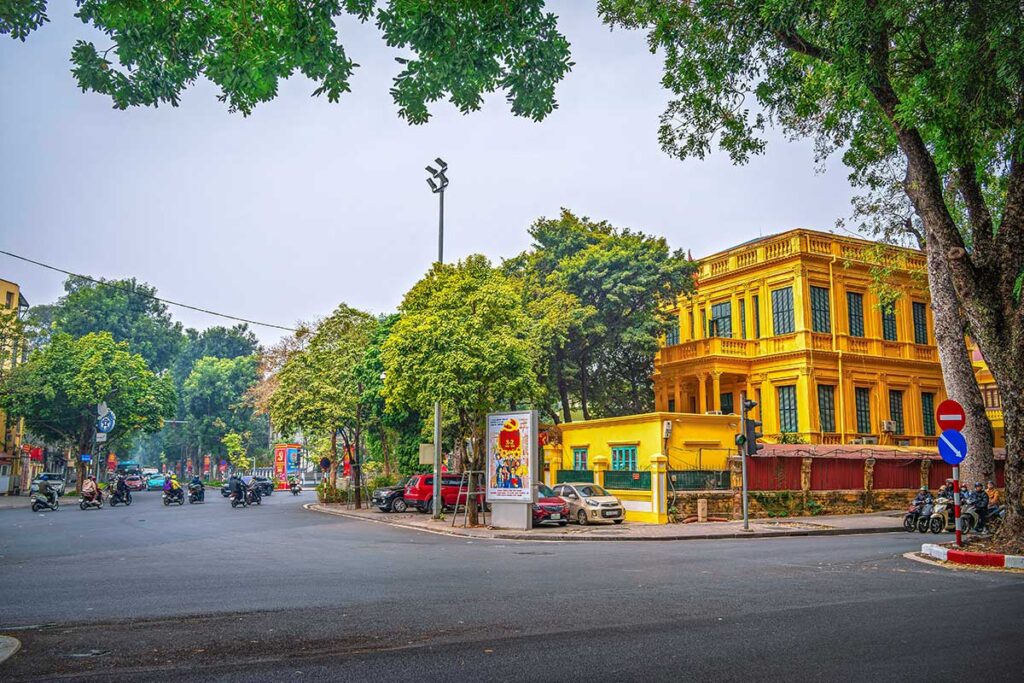
The yellow buildings, once a colonial symbol of power, now add warmth and character to the streetscape.
French Quarter vs Old Quarter
The French Quarter sits to the south and east of Hoan Kiem Lake, while the Old Quarter lies to the north and west. Though the two are neighbors, their personalities couldn’t be more different.
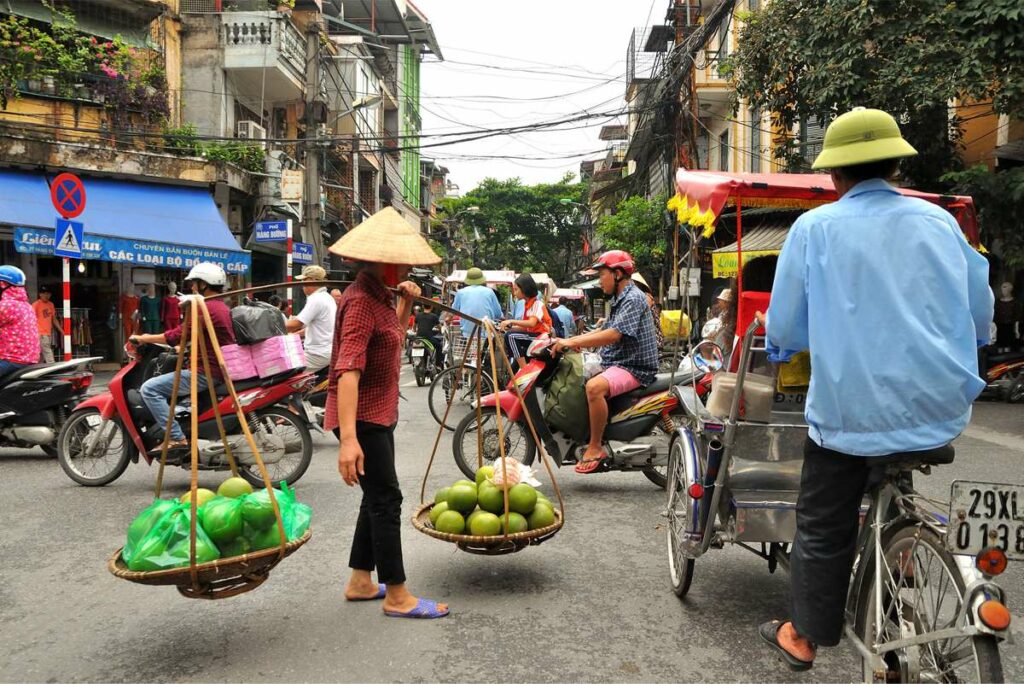
The French Quarter is spacious, organized, and visually calm—ideal for a relaxed stroll or a peaceful afternoon café stop. In contrast, the Old Quarter is busy, noisy, and packed with tightly squeezed tube houses, buzzing scooters, and street food vendors. Architecture is the clearest difference: French colonial in one, traditional Vietnamese in the other.
Travelers looking for refined architecture, a quieter pace, and a touch of history often enjoy the French Quarter more—especially if they’re already staying in the more chaotic Old Quarter.
Best highlights & things to see in the French Quarter
The French Quarter is best explored on foot, with elegant architecture, historic sites, and relaxed cafés never far apart. Below are the area’s top highlights—some grand and iconic, others small but full of local charm.
1. Hanoi Opera House
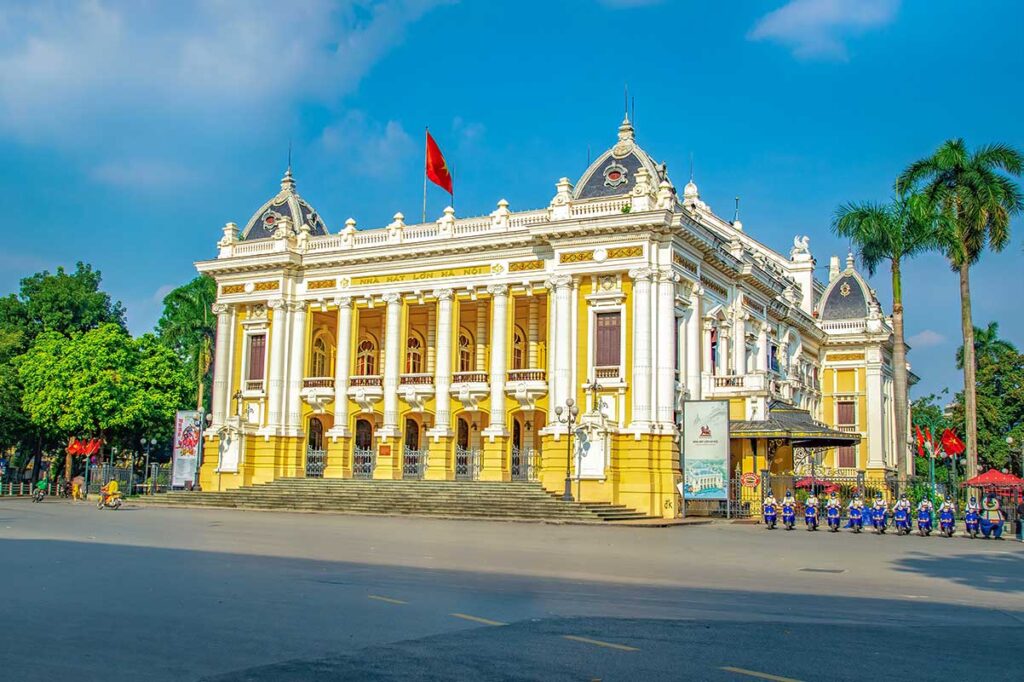
Built in 1911, the Hanoi Opera House is one of the city’s most iconic colonial landmarks, modeled after the Palais Garnier in Paris. It served as the cultural heart of French Indochina, hosting operas, ballets, and political events.
Today, it still functions as a performance venue for classical music, opera, and Vietnamese traditional arts. You can admire its impressive façade from the square or visit during an evening performance.
➤ See more in our complete guide to the Hanoi Opera House.
2. Hoa Lo Prison (Maison Centrale)
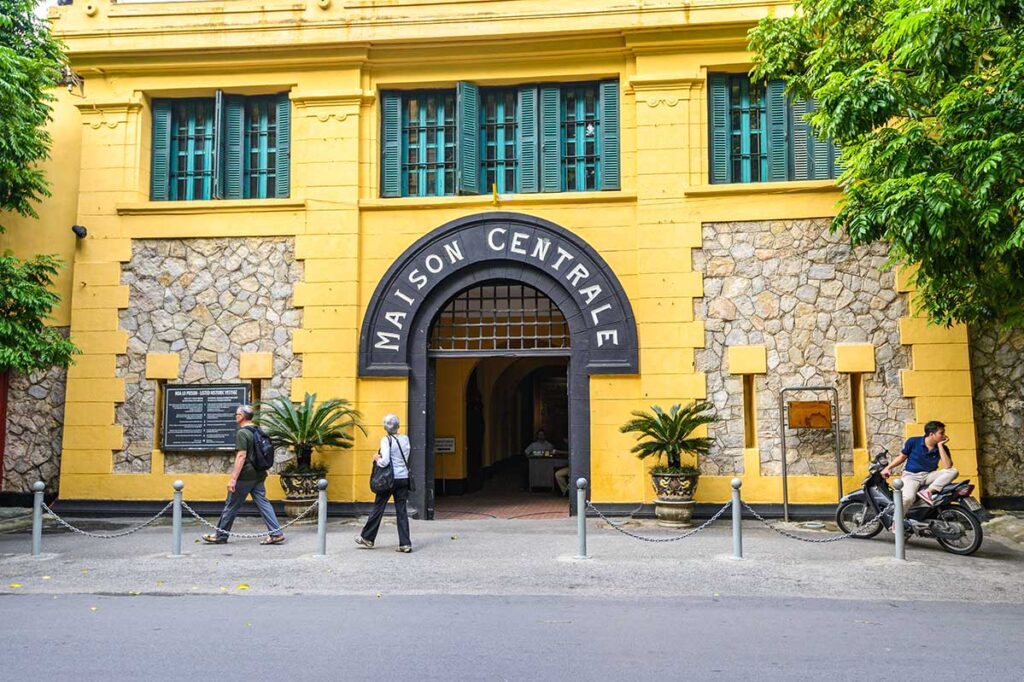
Originally built by the French in the 1890s to detain Vietnamese political prisoners, Hoa Lo Prison later gained global attention during the Vietnam War, when American POWs nicknamed it the “Hanoi Hilton.”
Much of the prison was demolished, but one section remains as a museum. Inside, you’ll find haunting displays of cells, shackles, and stories from both colonial and wartime periods. It’s one of Hanoi’s most sobering yet fascinating historical sites.
➤ Visit our full guide to Hoa Lo Prison for entry tips and what to expect inside.
3. St. Joseph’s Cathedral
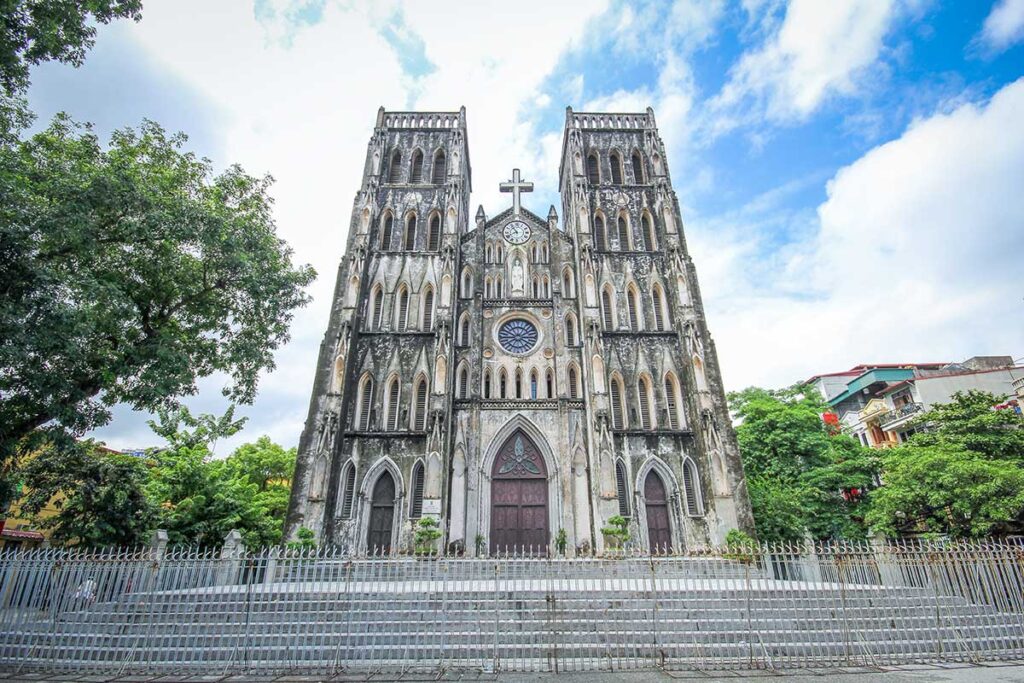
Completed in 1886, St. Joseph’s Cathedral is the oldest church in Hanoi and one of the first major French colonial structures in Vietnam. Its neo-Gothic design, pointed towers, and stained-glass windows clearly show European inspiration.
Mass is still held regularly, especially on weekends when the square fills with locals drinking lemon tea and enjoying street snacks. Even if you don’t go inside, the view from the square is one of Hanoi’s most photogenic.
➤ Learn more in our upcoming guide to St. Joseph’s Cathedral.
4. Vietnam National Museum of History
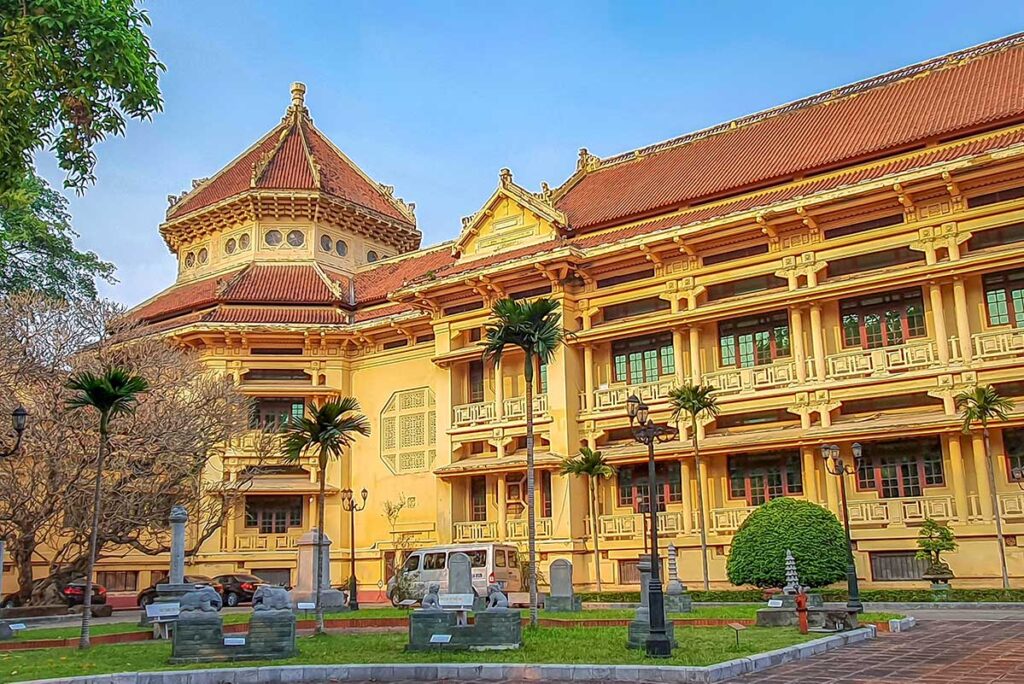
Housed in a striking Indochinese-style building designed by French architect Ernest Hébrard, this museum covers Vietnam’s history from prehistory to 1945. Highlights include ancient bronze drums, Champa sculptures, and ceramics.
The building itself is as impressive as the collection inside. Note that the post-1945 history is covered in a separate building across the street at 216 Tran Quang Khai.
➤ For full visiting info, see our guide to the Vietnam National Museum of History.
5. Vietnamese Women’s Museum
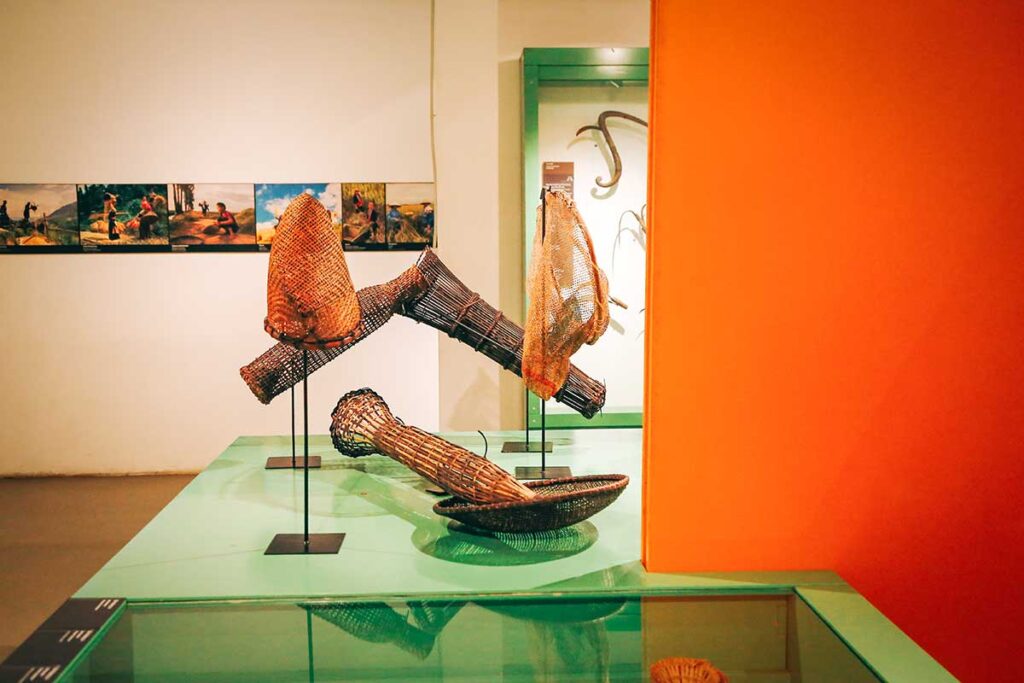
This modern museum honors the roles of women in Vietnamese society, from ethnic minority traditions to wartime contributions and family life. The exhibits are well-designed and often include English explanations.
It’s not in a colonial building, but its location in the French Quarter makes it easy to include in a walking route. A thoughtful, often overlooked stop for those interested in culture beyond monuments.
➤ See our complete guide to the Vietnamese Women’s Museum.
6. Trang Tien Street & Plaza
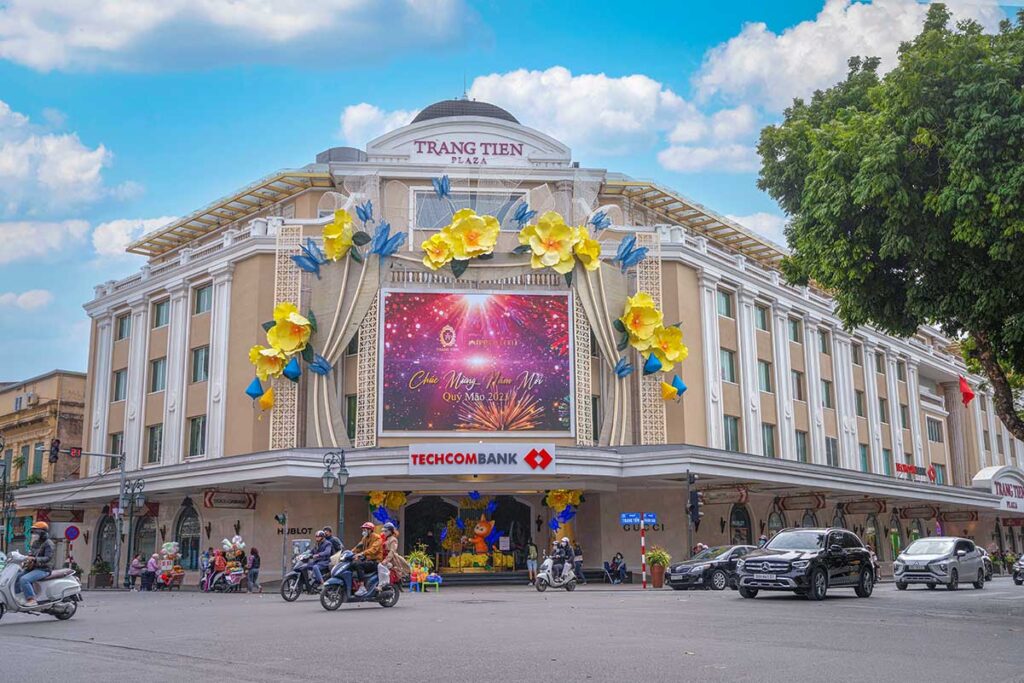
Trang Tien Street is known for its colonial architecture, boutique shops, and high-end shopping mall, Trang Tien Plaza. This was one of the most fashionable areas during the French era—and it still carries that vibe today.
It’s a pleasant street to walk, window-shop, and stop for an ice cream at the famous Trang Tien Ice Cream shop near the corner of the lake.
7. Sofitel Metropole Legend Hotel
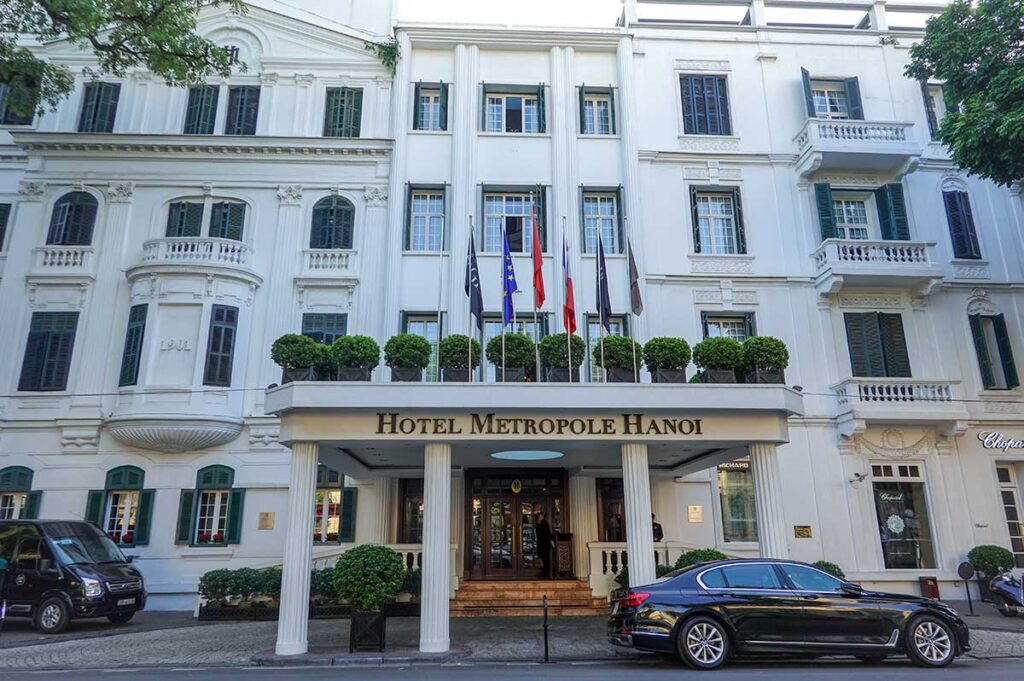
Opened in 1901, this luxury hotel is a living piece of colonial history. It has hosted writers, diplomats, and celebrities for over a century, including Charlie Chaplin and Graham Greene.
Even if you’re not staying here, you can enjoy a drink in the courtyard or take the Path of History bunker tour, which explores a secret wartime shelter beneath the hotel. Advance booking for the tour is recommended.
8. Art Galleries
Several small but interesting art galleries can be found around the French Quarter, showcasing both traditional and contemporary Vietnamese works. Red Moon Gallery and Thanh Binh Gallery are among the most accessible.
Even if you’re not buying, it’s a pleasant way to see how Vietnamese artists blend old and new styles in lacquer, oil, and silk painting.
9. French Colonial Government Buildings & Embassies
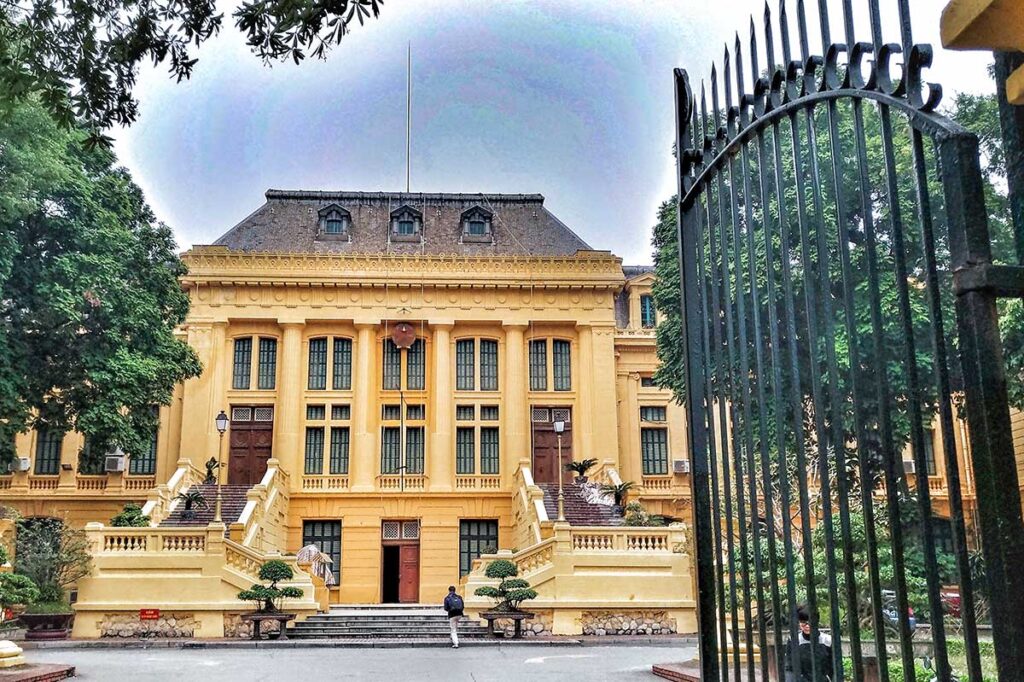
As you walk through the district—especially along Tran Hung Dao and Ly Thuong Kiet—you’ll pass elegant yellow villas and former colonial government buildings, now serving as embassies and administrative offices.
Most are not open to the public, but the architecture is worth admiring from the street. This area is especially scenic in the early morning or late afternoon when the light hits the yellow façades.
10. Lemon Tea Street Culture (near the cathedral)
Locals often gather in the evenings around St. Joseph’s Cathedral to drink lemon tea (tra chanh), sit on plastic stools, and watch the street life unfold.
It’s a casual yet very Hanoi experience that gives you a glimpse into daily life. Join the crowd for a drink and people-watching session after a long walk.
11. Bún Cha Huong Liên (Obama restaurant)
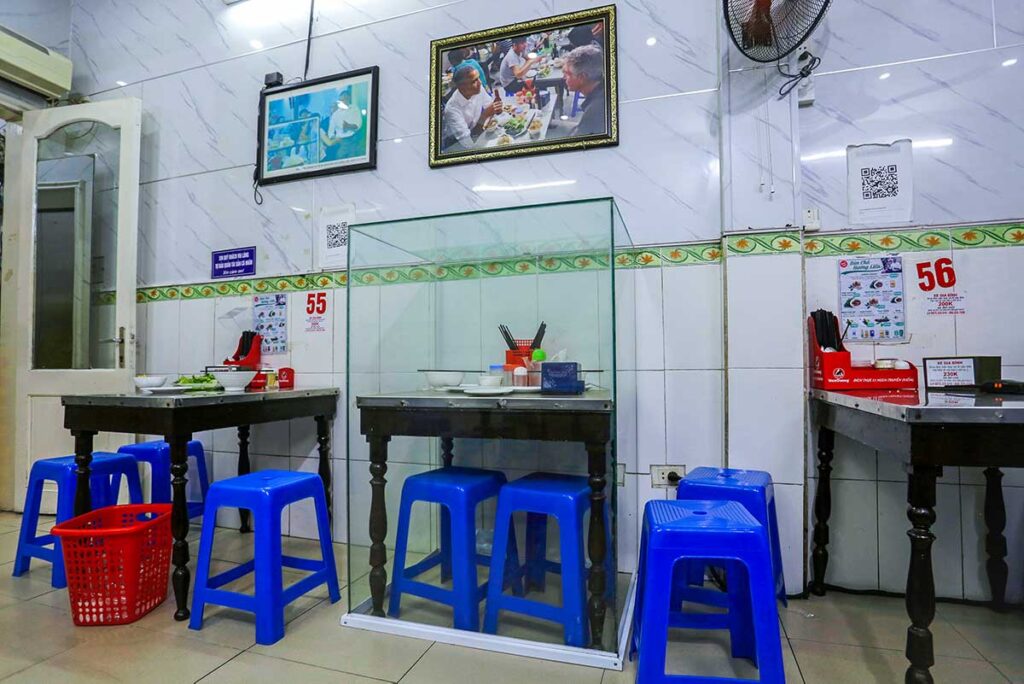
Made famous by Barack Obama and Anthony Bourdain, this casual eatery serves Hanoi’s signature dish: grilled pork with vermicelli noodles (bun cha).
It’s located just outside the traditional French Quarter boundaries but still close enough to include in your route. The food is affordable and excellent, though the “Obama Combo” is more of a photo-op than a must-eat.
➤ See our complete guide to the Bún Cha Huong Liên.
12. Ly Thai To Park & Flower Gardens
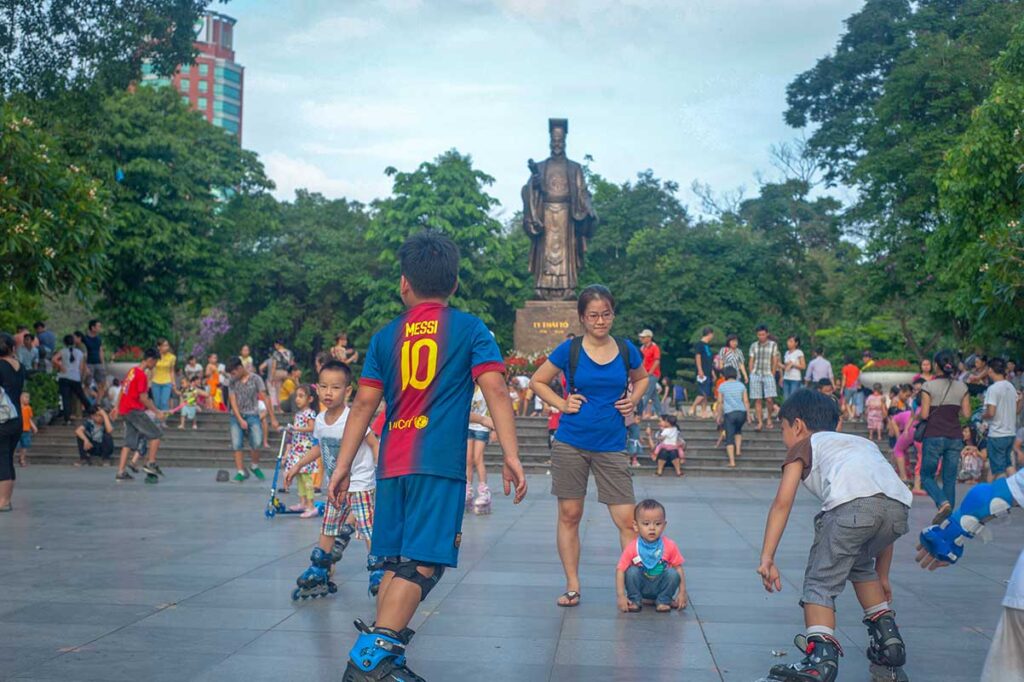
Located just north of the Opera House, this small park offers a quiet green space with flower beds, sculptures, and a statue of King Ly Thai To.
It’s a pleasant spot to sit and rest under the trees, often used by locals for tai chi or dancing in the mornings. A relaxing finish point for your French Quarter walk.
➤ See our complete guide to the Ly Thai To Park.
Staying in the Hanoi French Quarter
The French Quarter is a good choice for travelers who prefer calm streets, elegant surroundings, and a slightly more polished experience. With wide sidewalks, colonial buildings, and a quieter atmosphere, it offers a very different feel from the Old Quarter.
That said, it’s not necessarily better—just different. The Old Quarter has the livelier vibe, packed with street food, markets, bars, and local energy. It’s more chaotic but full of character. In contrast, the French Quarter is more spacious, less noisy, and better suited to those who value comfort, architecture, and a slower pace.
In terms of accommodation, the French Quarter has many of Hanoi’s most high-end hotels, but also a selection of boutique and mid-range options. Prices are generally a bit higher, and many hotels offer more space and quieter surroundings. If you’re unsure where to stay, think about whether you want vibrant street life right outside your door—or a more relaxed base that’s still within walking distance of the main sights.
Where to eat & drink in the French Quarter
The French Quarter isn’t just about architecture—it’s also one of Hanoi’s top areas for food and drink. From elegant French cafés and fine dining restaurants to iconic street food and casual local spots, there’s a wide mix of options to explore.
This district is home to several entries in the Michelin Guide, making it a standout area for both quality and variety. Whether you’re after a slow multi-course dinner, a quick bowl of bún chả, or a cup of lemon tea on the sidewalk, you’ll find something that suits your style.
Here are a few well-known places to try:
- Le Beaulieu – Hanoi’s premier French fine-dining restaurant, located inside the Sofitel Metropole. Ideal for a special night out.
- Habakuk – A modern European bistro awarded the Michelin Bib Gourmand. Stylish, relaxed, and known for bold flavors.
- Bún Chả Hương Liên – This casual eatery became globally famous after Barack Obama and Anthony Bourdain ate here. Great food, low prices.
- Azabu – A Japanese restaurant inside Hotel du Parc, recognized by the Michelin Guide for its refined lunch sets and omakase dinners.
- Lemon tea near the cathedral – For a true Hanoi experience, sit with locals on small plastic stools and sip tra chanh while watching the street life go by.
This is also a good area for stylish coffee shops, wine bars, and patisseries—especially around Trang Tien and Ly Thuong Kiet streets.
Practical travel tips for visiting the French Quarter
Getting around
The French Quarter is one of the most walkable areas in Hanoi. Streets are wide, sidewalks are shaded by tall trees, and traffic is calmer compared to other districts—making it ideal for a relaxed walking experience.
For destinations farther out, like the Ho Chi Minh Mausoleum or Train Street, it’s easiest to use a taxi or book a Grab (the local ride-hailing app). Both are inexpensive and convenient.
Self-guided walking route
A self-guided walking tour is a great way to explore the French Quarter at your own pace. We’ve created a custom Google Maps route that connects the main highlights, including the Opera House, museums, churches, and quiet streets lined with colonial villas.
The full loop takes around 2 to 3 hours, depending on how many stops you make. The best times to go are early morning or late afternoon, when the streets are cooler and the light is perfect for photos.
Services & Comfort
You’ll find everything you need in the French Quarter: ATMs, pharmacies, convenience stores, and a wide choice of cafés and restaurants. While there are luxury spots, there are also plenty of affordable local food places.
It’s also one of the cleanest and calmest districts in the city—a good area to recharge if Hanoi’s busier areas start to feel overwhelming.
